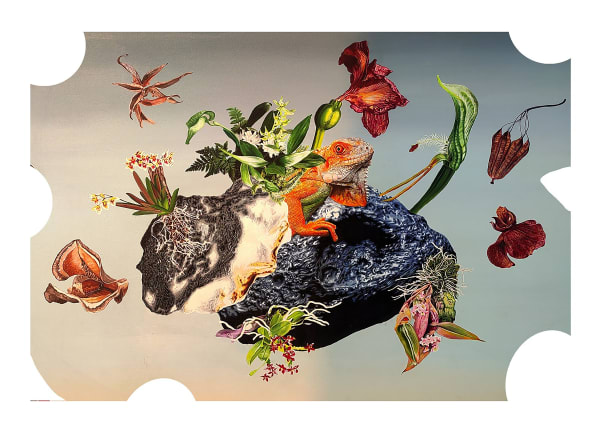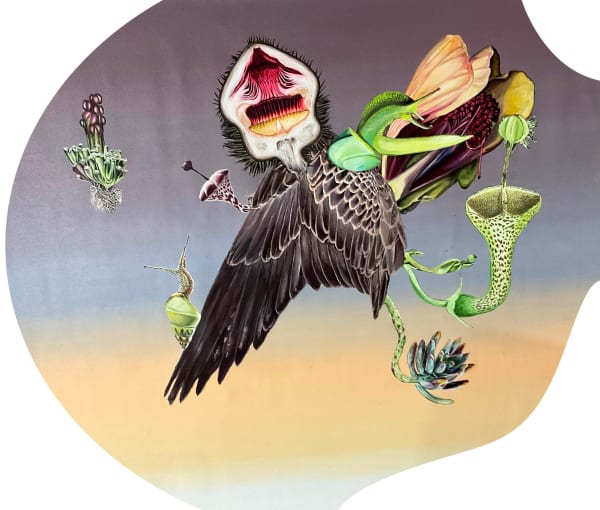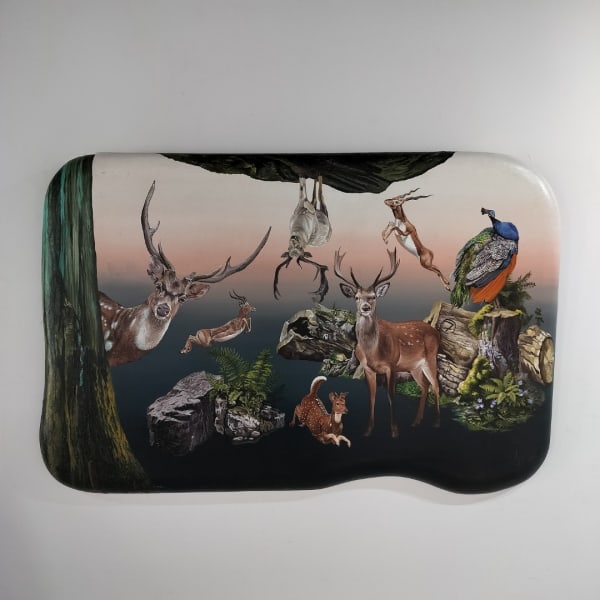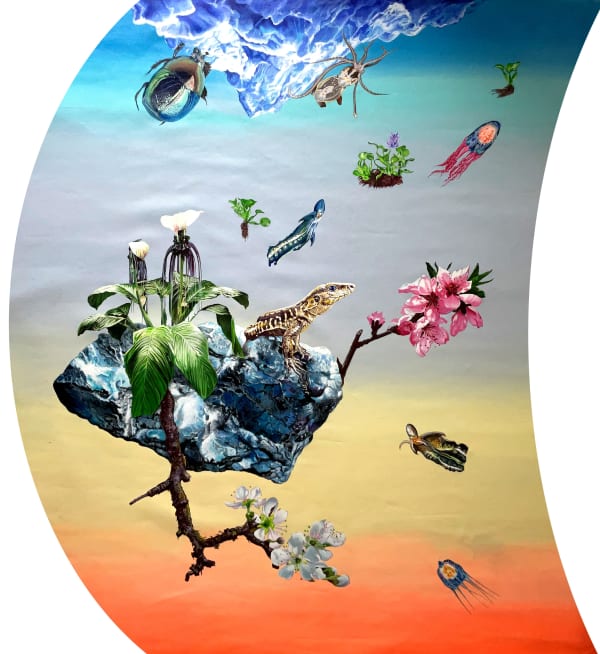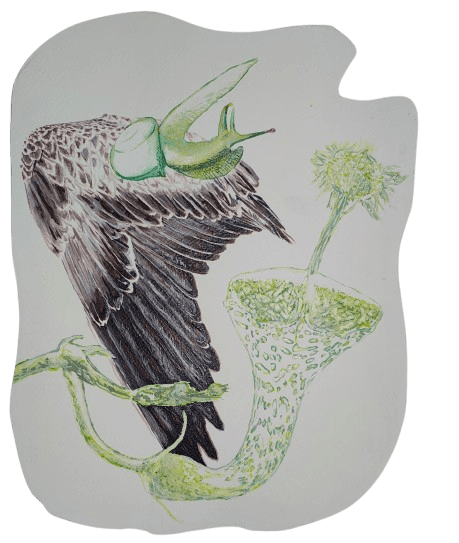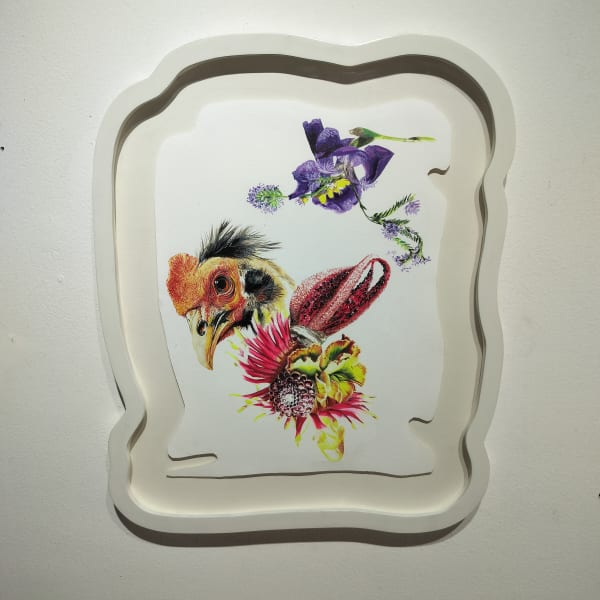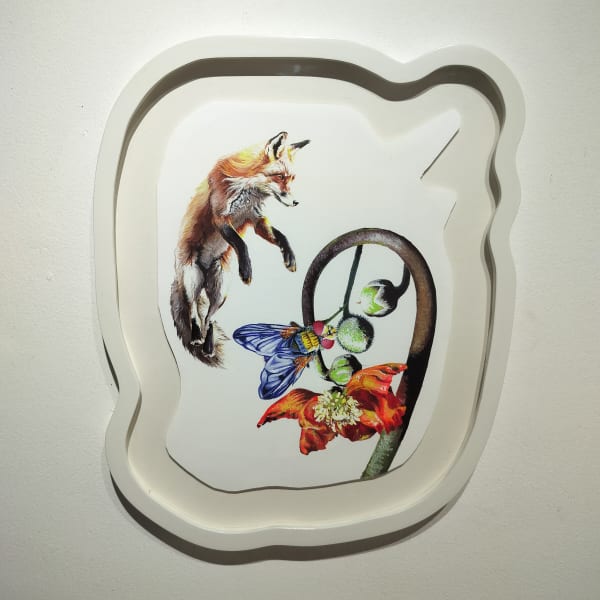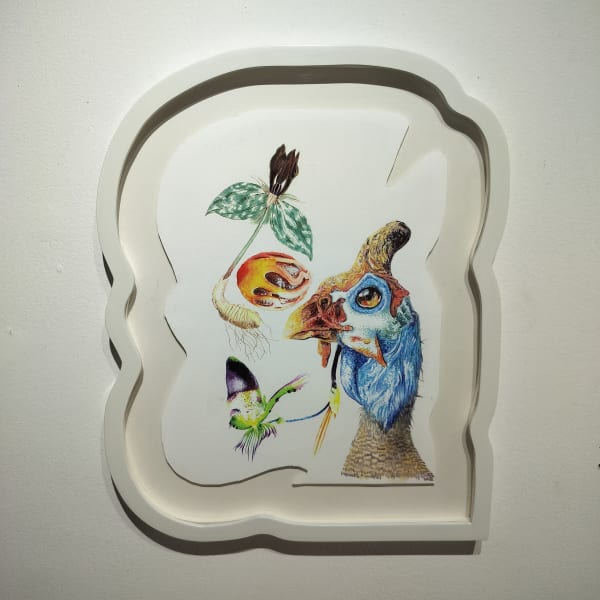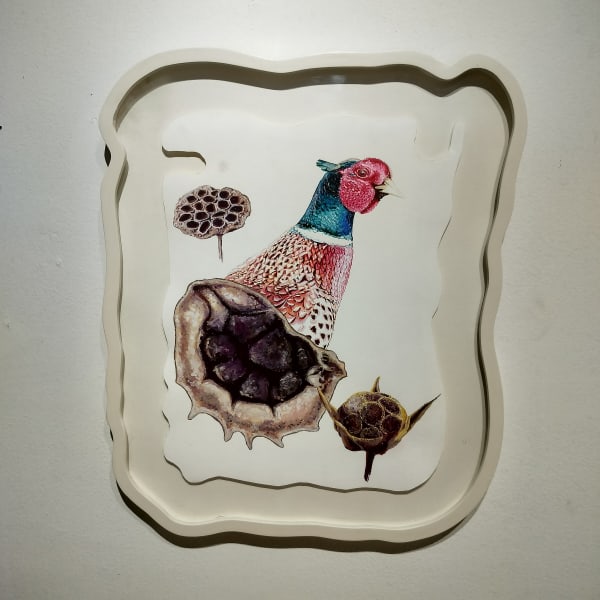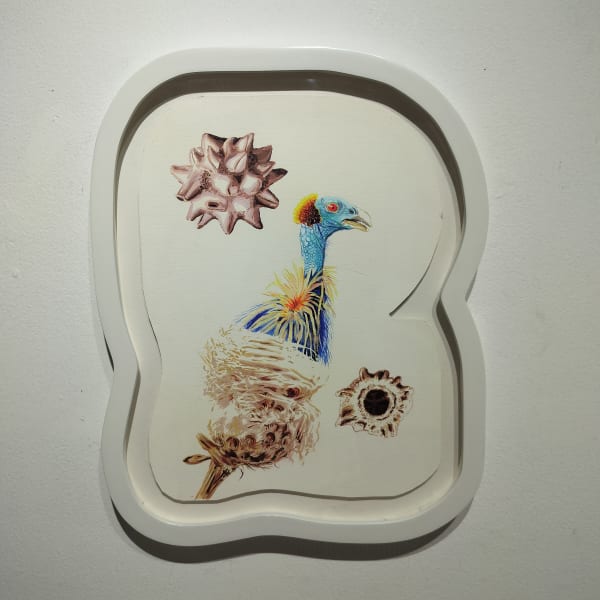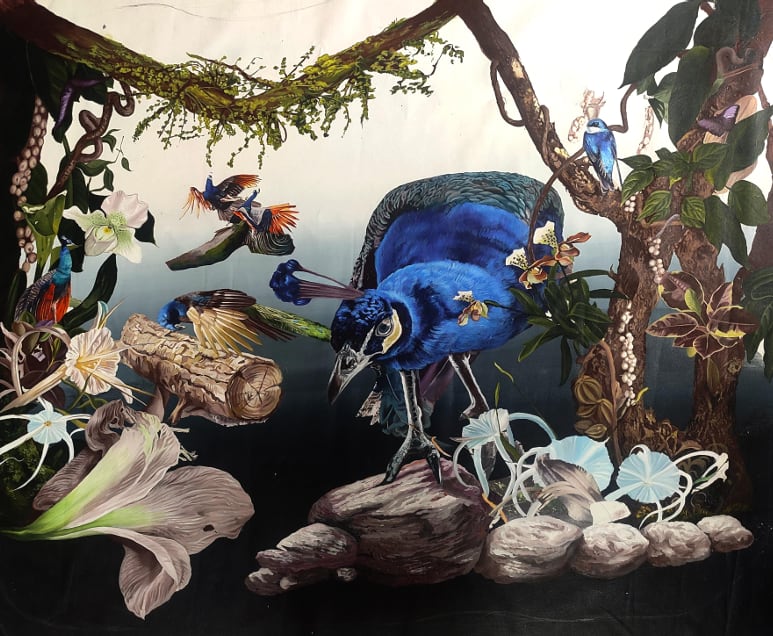Disappearing Echoes of the Isolated: by Satadru Sovan Banduri
-
 Satadru Sovan Banduri, About to Fly, 2023
Satadru Sovan Banduri, About to Fly, 2023 -
 Satadru Sovan Banduri, Nature Ruin it so Swiftly
Satadru Sovan Banduri, Nature Ruin it so Swiftly -
 Satadru Sovan Banduri, Break apart to losing Sense let's fly!, 2024
Satadru Sovan Banduri, Break apart to losing Sense let's fly!, 2024 -
 Satadru Sovan Banduri, Decryption of dry Rain, 2024
Satadru Sovan Banduri, Decryption of dry Rain, 2024
-
 Satadru Sovan Banduri, Dis Location, 2024
Satadru Sovan Banduri, Dis Location, 2024 -
 Satadru Sovan Banduri, Life is broken-winged Bird.., Suspend Chameleon cannot Fly
Satadru Sovan Banduri, Life is broken-winged Bird.., Suspend Chameleon cannot Fly -
 Satadru Sovan Banduri, Makeshift Plant will host us, 2022
Satadru Sovan Banduri, Makeshift Plant will host us, 2022 -
 Satadru Sovan Banduri, Echoes from the Dislocated Silence, 2025
Satadru Sovan Banduri, Echoes from the Dislocated Silence, 2025
-
 Satadru Sovan Banduri, Nature ruin it so Swifty, 2023
Satadru Sovan Banduri, Nature ruin it so Swifty, 2023 -
 Satadru Sovan Banduri, Temporary filter for not Fruitful Flowers, 2023
Satadru Sovan Banduri, Temporary filter for not Fruitful Flowers, 2023 -
 Satadru Sovan Banduri, Where wings Dare not Wander, 2025
Satadru Sovan Banduri, Where wings Dare not Wander, 2025 -
 Satadru Sovan Banduri, Whispers from the Displaced , 2025
Satadru Sovan Banduri, Whispers from the Displaced , 2025
-
 Satadru Sovan Banduri, After the rain gazing Mountten , 2024
Satadru Sovan Banduri, After the rain gazing Mountten , 2024 -
 Satadru Sovan Banduri, Drowning Underwater like Cristal clear Sky, 2023
Satadru Sovan Banduri, Drowning Underwater like Cristal clear Sky, 2023 -
 Satadru Sovan Banduri, Headless of Lacking Space, 2022
Satadru Sovan Banduri, Headless of Lacking Space, 2022 -
 Satadru Sovan Banduri, Song of See
Satadru Sovan Banduri, Song of See
-
 Satadru Sovan Banduri, Whispers left Behind-I, 2024
Satadru Sovan Banduri, Whispers left Behind-I, 2024 -
 Satadru Sovan Banduri, Whispers left Behind-II, 2024
Satadru Sovan Banduri, Whispers left Behind-II, 2024 -
 Satadru Sovan Banduri, Whispers left Behind-III, 2024
Satadru Sovan Banduri, Whispers left Behind-III, 2024 -
 Satadru Sovan Banduri, Whispers left Behind-IV, 2024
Satadru Sovan Banduri, Whispers left Behind-IV, 2024
-
 Satadru Sovan Banduri, Whispers left Behind-V, 2024
Satadru Sovan Banduri, Whispers left Behind-V, 2024 -
 Satadru Sovan Banduri, Whispers left Behind-Vi, 2024
Satadru Sovan Banduri, Whispers left Behind-Vi, 2024 -
 Satadru Sovan Banduri, Echoes of the Vanished-I, 2024
Satadru Sovan Banduri, Echoes of the Vanished-I, 2024 -
 Satadru Sovan Banduri, Echoes of the Vanished-II, 2024
Satadru Sovan Banduri, Echoes of the Vanished-II, 2024
-
 Satadru Sovan Banduri, Echoes of the Vanished-III, 2024
Satadru Sovan Banduri, Echoes of the Vanished-III, 2024 -
 Satadru Sovan Banduri, Echoes of the Vanished-IV, 2024
Satadru Sovan Banduri, Echoes of the Vanished-IV, 2024 -
 Satadru Sovan Banduri, Echoes of the Vanished-IX, 2024
Satadru Sovan Banduri, Echoes of the Vanished-IX, 2024 -
 Satadru Sovan Banduri, Echoes of the Vanished-V, 2024
Satadru Sovan Banduri, Echoes of the Vanished-V, 2024
-
 Satadru Sovan Banduri, Echoes of the Vanished-VI, 2024
Satadru Sovan Banduri, Echoes of the Vanished-VI, 2024 -
 Satadru Sovan Banduri, Echoes of the Vanished-VII, 2024
Satadru Sovan Banduri, Echoes of the Vanished-VII, 2024 -
 Satadru Sovan Banduri, Echoes of the Vanished-VIII, 2024
Satadru Sovan Banduri, Echoes of the Vanished-VIII, 2024 -
 Satadru Sovan Banduri, Echoes of the Vanished-X, 2024
Satadru Sovan Banduri, Echoes of the Vanished-X, 2024
Satadru Sovan Banduri’s practice emerges at the intersection of speculative ecology and metamorphic embodiment, and posthuman imagination. Working across a range of media, his compositions on canvas and beyond engage with a lineage that spans Hieronymus Bosh’s phantasmagoric tableaux, Max Ernst’s surrealist myth-making, and the visual poetics of dreamlike-dystopian psychedelia. His densely populated canvases craft speculative ecosystems where bodies, species, and temporalities collapse into one another. His work echoes traditions of world-building in art history―undoing fixed perspectives and taxonomic order in favour of hybridity, mutation and ontological play.
Art-Historically, Satadru’s surfaces recall the density of Indic painting traditions and surrealist compositions, yet his spatial ruptures and hallucinatory figuration also nod to the psychedelic aesthetics of 1970s counterculture. His bio-surrealism is grounded in a politics of place―marked by South Asian visual traditions, postcolonial inheritances, and posthuman epistemologies. His painterly spaces, often unstable and multi-planar, draw from the surrealist dissolution of rations perspective but are inflected by posthumanist thought.
Donna Haraway’s notion of speculative fabulation is central here: Banduri does not represent reality but composes ontological experiments. Figures mutate, terrains shift, species misalign. Works such as No Wing Returns or Rupture and Remind are not allegorical; they are provocations―material propositions of kinship across decay, desire, and becoming. Rosi Braidotti’s posthuman theory finds visual corollary here: Satadru’s world is one in which bodies are porous, agency is distributed, and identity is always in process.
His temporalities resist linearity. Instead, his canvases operate within “deep time”―a concept drawn from geology. Titles like Rhamphorynchus Reptile Bound to Soar speak to paleontological imagination, yet they resist nostalgia and evolutionary triumph, where non-normative rhythms of life interrupt capitalist futurism and Darwinian chronologies. This is time as sediment, not sequence―a mode of being with extinction, not beyond it.
Within his cosmology, the trauma of earthquakes and shifting tectonic plates become not just geological metaphor but political index―evoking the violent realignments wrought by urban development, where entire animal habitats are hijacked to make way for skyscrapers. Satadru’s canvases register such moments as ontological ruptures: acts of “animal hijacking” in which future-facing developments erase nonhuman lifeworlds. The haunting image of peacocks crying amid the razing of forest land in Hyderabad―bulldozers clearing the ground for yet another IT Park―echoes powerfully through his visual landscapes, collapsing “deep time” into the brutal immediacy of ecological erasure.
He builds layered, immersive surfaces where lush chromatin fields―electric pinks, lurid greens, toxic blues―pulse with effect. These are not merely aesthetic choices but political strategies. As art historian Karin Cope notes in her writing on color and excess, saturated hues can perform “disobedience” within regimes of taste and restraint. The saturation and ornamentation further recall the politics of visual excess not in utopian blueprints but in ephemeral, camp gestures that gesture toward the “not-yet-here.” Banduri’s surfaces shimmer with such potentialities, even as they mourn ecological degradation.
Satadru Sovan Banduri does not offer coherent answers or stable meanings. Rather his works stage speculative encounters―with ruin, with pleasure, with after-life. His work invites not passive viewing but what Eve Sedgwick described as “reparative reading" a
way of engaging art that embraces contradiction, affect, and ambiguity. His paintings demand that we feel with them, grieve with them and imagine through them. In a moment of planetary precarity, his visual cosmologies do not restore order. They re-enchant disorder as a site of speculative, pleasure, and possibility.
- Satyajit Dave
Bombay, June 2025
-

NATURE'S CRY IN A DREARY FARM
Deccan ChronicleChokita Paul, Deccan Chronicle, 23 July 2025 -

Artist Satadru Sovan Banduri showcases his multidisciplinary artworks at this exhibition in Hyderabad
Indulge | Indian ExpressSakshi Kaithwas , Indulge | Indian Express, 18 July 2025 -
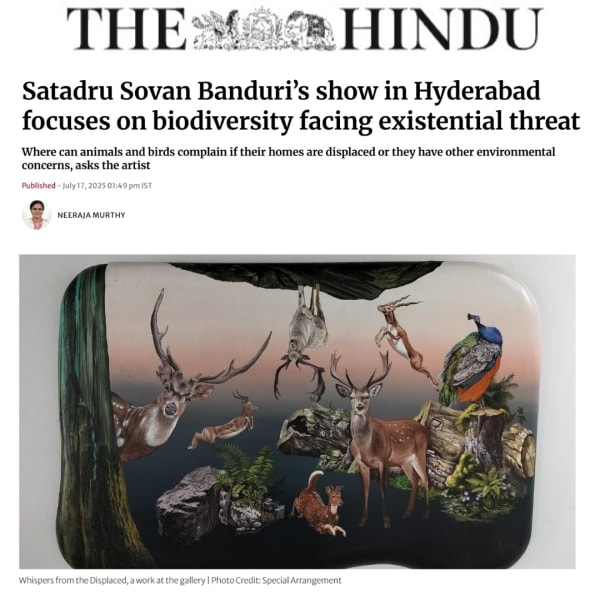
Satadru Sovan Banduri’s show in Hyderabad focuses on biodiversity facing existential threat
The HinduNeeraja Murthy, The Hindu, 17 July 2025









